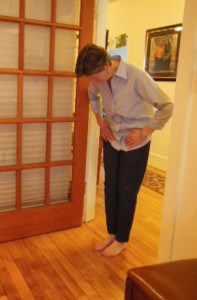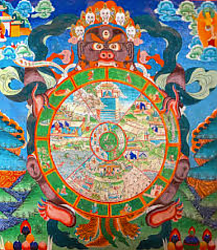The Practice of Bowing
 Why Do We Do That? Questions and Answers about Shambhala Culture and Decorum
Why Do We Do That? Questions and Answers about Shambhala Culture and Decorum
QUESTION:
I notice that many people bow when they enter and leave the shrine room and at other times. What is the meaning of the bow?
ANSWER:
“The practice of bowing in Shambhala is a way to extend one’s dignity and to acknowledge the inherent dignity of another person, group, or sacred object. When we bow, it is not a gesture of submission. We do not just “flop over.” Rather we rouse our own confidence and goodness–and offer that to the situation through bowing.
QUESTION:
Is bowing required? What’s the proper way to do it?
ANSWER:
Bowing is not required. If you choose to bow, here is some guidance: “A Shambhala bow is presented by placing one’s hands on the upper thighs, first slightly lowering the head and then bending slightly at the waist. You may also see people bowing with hands in the anjali mudra. ‘Anjali’ means ‘supplication’ in Sanskrit, and ‘mudra’ is a ‘symbolic hand gesture.’ In the anjali mudra, the hands are held together at the level of the heart, and this gesture is typically used when bowing to a teacher or to the shrine.”
Quotations from “An Introduction to Shambhala Culture,” (2012). Halifax: Tiger, pp. 13-14. Used with permission and appreciation.
Do you have a question about decorum and culture that you’d like answered? Please send your question to Trina at trinamagi(at)burlingtontelecom.net





